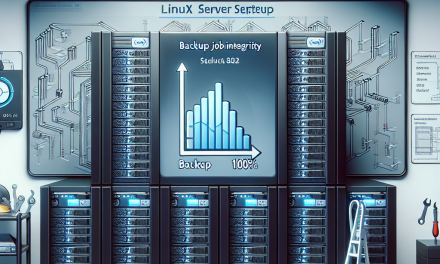In today’s fast-paced digital landscape, security is a paramount concern for any organization. One innovative method of bolstering security on Linux servers is the use of ephemeral user accounts. These accounts serve temporary purposes and are automatically created and destroyed as needed. This article will explore the advantages of ephemeral user accounts, how to implement them, and best practices for managing these accounts effectively.
What are Ephemeral User Accounts?
Ephemeral user accounts are temporary accounts created for specific tasks, users, or sessions. These accounts can be particularly useful in environments where security is paramount, such as cloud environments or in multi-tenant systems where users need limited access to shared resources.
Key Characteristics of Ephemeral User Accounts:
- Temporary Nature: These accounts are short-lived, existing only for the duration of a session or task.
- Minimal Permissions: They have restricted privileges, limiting access to sensitive resources and reducing the risk of a security breach.
- Automatic Cleanup: They are designed to be automatically deleted once they are no longer needed.
Advantages of Using Ephemeral User Accounts
-
Reduced Attack Surface: Since these accounts expire quickly, the window of opportunity for attackers is minimized. If an account is compromised, it is only useful for a limited time.
-
Minimized Permissions: By granting just enough privileges for a specific task, you limit the potential damage from an account getting compromised.
-
Automatic Cleanup: Ephemeral accounts automatically vanish once their purpose is served, reducing clutter and the risk of administrative mistakes related to old accounts.
-
Improved Compliance: Many regulations and standards require organizations to manage user access closely. The ephemeral nature of these accounts helps meet compliance requirements.
Implementing Ephemeral User Accounts
Implementing ephemeral user accounts on a Linux server typically involves the following steps:
1. Use System Tools
Most Linux distributions come with built-in command-line tools to manage user accounts. The useradd, usermod, and userdel commands are essential for creating and removing accounts.
-
Creating an Account:
bash
useradd -m -s /bin/bash tempuser -
Deleting an Account:
bash
userdel -r tempuser
2. Use Scripting for Automation
To simplify the management of ephemeral user accounts, consider using scripts. Here’s a basic Bash script that can create a temporary user and delete it after a certain time period:
bash
TEMP_USER=”tempuser”
useradd -m -s /bin/bash $TEMP_USER
usermod -aG sudo $TEMP_USER
echo “Temporary user $TEMP_USER created. It will expire in 1 hour.”
sleep 3600
userdel -r $TEMP_USER
echo “Temporary user $TEMP_USER has been deleted.”
3. Focus on Authentication
Consider using single sign-on (SSO) or tokens (like JWT) for authentication. This can further enhance security, allowing users to access the ephemeral accounts without managing credentials manually.
4. Logging and Monitoring
Ensure you maintain logs for all actions involving ephemeral user accounts. Use tools like auditd or centralized logging solutions to monitor account creation and deletion activity.
Best Practices for Managing Ephemeral User Accounts
-
Set Expiration Policies: Define clear policies regarding when and how accounts are to be created and deleted.
-
Limit Resource Access: Grant permissions only as needed to minimize risk.
-
Regular Audits: Even though these accounts are ephemeral, regular audits can help ensure that policies are followed and that no unnecessary permissions are granted.
-
Patch Management: Keep your server and any associated software up to date to protect against vulnerabilities.
-
Educate Users: Ensure that users understand the purpose and operation of ephemeral accounts, especially if they are responsible for creating them.
Conclusion
Ephemeral user accounts represent a proactive approach to security in the Linux environment. By employing these temporary accounts, organizations can enhance their security posture significantly, reduce the risk of unauthorized access, and comply with industry standards. Implementing ephemeral accounts may require some initial setup and consideration, but the benefits far outweigh the effort. With meticulous management and clear policies, your organization can leverage ephemeral accounts as a robust part of its security strategy.





